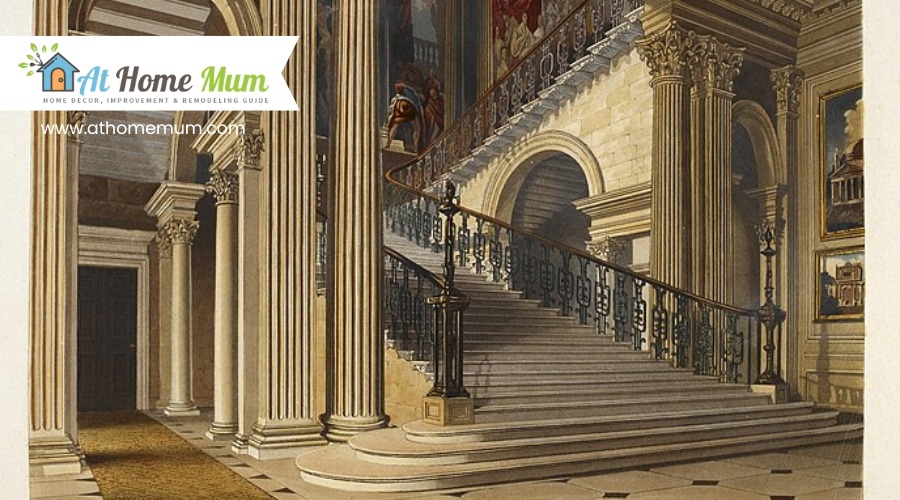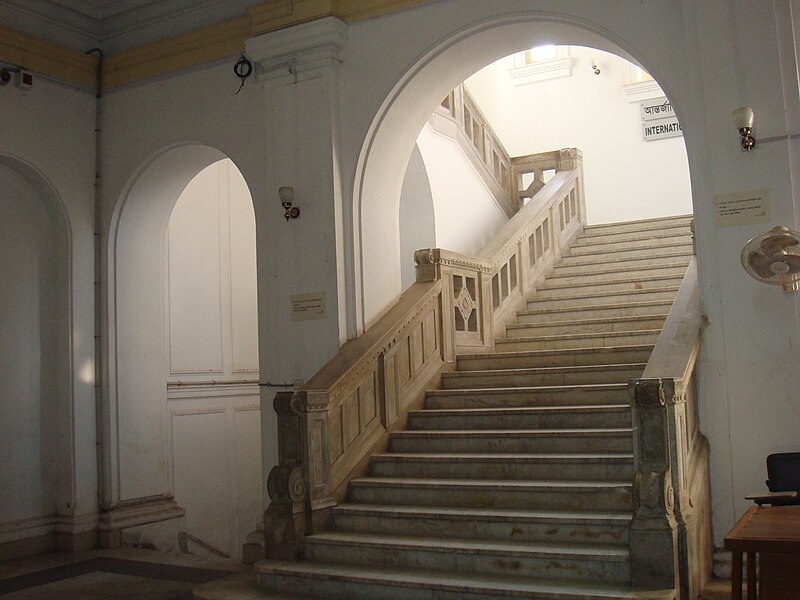Stair Case, Buckingham House – The History of the Royal Residences (1819)
Staircases have been an integral architectural element throughout history, shaping the way humans move and interact within spaces. From ancient times to modern days, staircases have undergone significant transformations to not only cater to the functional demand of connecting different levels but also to embrace the evolving aesthetics and symbolisms in architecture. The earliest staircases can be traced back to the 2nd millennium BC, where they were constructed with walls on both sides, as seen in Egyptian structures.
As societies advanced, so did the design and construction of staircases, with the influence of the Industrial Revolution being particularly noteworthy. The introduction of new materials such as metal, glass, and concrete, paired with innovative manufacturing techniques, paved the way for staircases that challenged traditional boundaries. This era saw the emergence of diverse styles, including open, cantilevered, and even floating staircases, marking a departure from the sole use of stone and wood.
Staircases also carry a dual nature, not just as functional elements, but also as significant aesthetic and cultural components in buildings. They can represent social and philosophical concepts, from a means of ceremonial procession to a symbol of ascent in both a literal and metaphorical sense. Through their rich formal possibilities and the complexity of their geometric solutions, staircases have consistently held an important role in architecture, often becoming the focal point and defining the character of a space.
Origins of Staircases

Staircases have been integral to architectural designs, serving both practical and symbolic purposes since ancient times.
Early Staircase Constructions
In the Neolithic period, staircases were rudimentary and created out of necessity. The basic construction of early stairs allowed people to navigate heights and reach different levels within a structure. They were typically fashioned from materials abundant in the surrounding environment, such as stone, wood, or earth.
- Materials used:
- Mud
- Stone
- Wood
Staircases were not just functional; they symbolized movement and progression within a space, delivering individuals to higher or lower terrains, which could also signify an ascent to safety or strategic positions.
Ancient Civilizations and Staircase Use
Egyptian civilization stands out for its architectural innovation, including the development of staircases. By around 2500 BCE, Egyptians incorporated staircases into their monumental structures like pyramids, refining the stairs’ construction with sturdy materials.
- Functions of Staircases in Ancient Egypt:
- Access different levels within pyramids
- Facilitate movement between terrains
Stonemasons skillfully crafted these building elements, ensuring they could withstand the test of time and use. These ancient staircases not only served a utilitarian purpose but also reflected the Egyptians’ mastery of construction and their understanding of building aesthetics.
Architectural Evolution
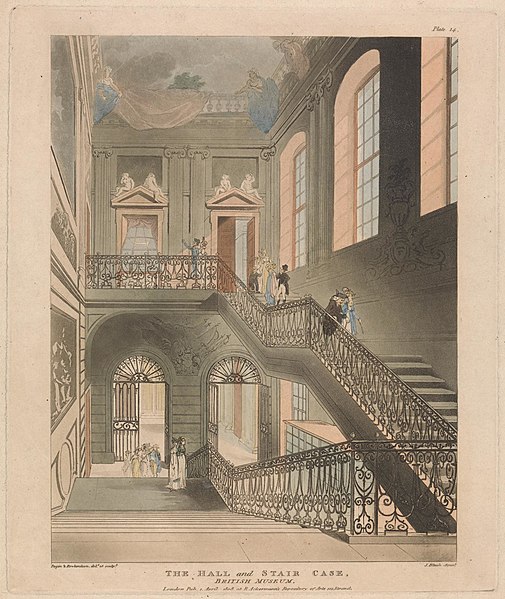
The staircase has undergone a significant metamorphosis through history, reflecting shifts in architectural styles, technological advancements, and social dynamics.
Development of the Spiral Staircase
Spiral staircases evolved to provide solutions in spatial efficiency and defense. One finds their origins in ancient times, with some of the first instances appearing in Middle Eastern ziggurats and later in Roman structures. The strategic utility of the spiral structure became evident with its footprint, requiring minimal space while providing access to multiple levels. During the medieval period, castles and fortresses adopted spiral staircases for their space-saving designs and the added benefit that they could be easily defended by defenders, who had the height advantage and, if right-handed, more room to maneuver.
Impact of the Renaissance on Staircase Design
The Renaissance brought a transformation in staircase architecture, shifting from purely functional elements towards elaborate, artistic expressions. Italian architect Andrea Palladio’s work, particularly in the four books of architecture published in 1570, showcased the emphasis on symmetry, proportion, and the utilization of classical orders that came to influence Renaissance staircase design. The grand staircases of this era not only connected floors but also displayed the societal and cultural significance of staircases as a centerpiece of grandeur within public and private buildings.
Baroque and Beyond: Staircases as Status Symbols
Moving into the Baroque period and beyond, staircases became grand visual statements that spoke to status and wealth. France’s Château de Chambord features a double-helix staircase attributed to Leonardo da Vinci, where two separate flights spiral around each other without meeting, combining both form and function with a sense of pageantry. In the Baroque era, architects like Gian Lorenzo Bernini introduced theatricality and dynamism into staircase design, elevating such constructions from mere structural elements to powerful symbols of affluence and power.
Technological and Material Advancements
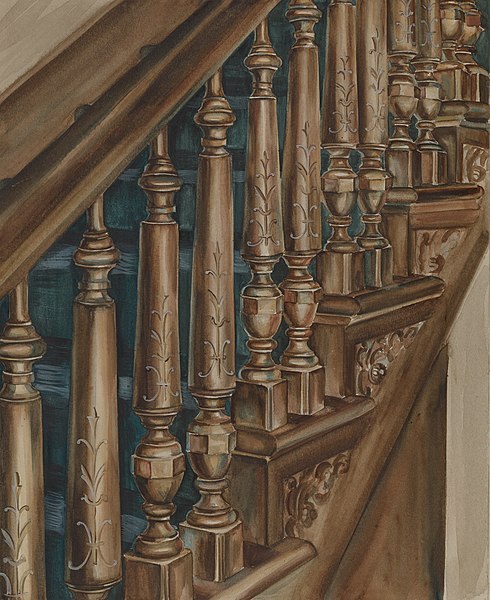
The materials and techniques used in staircase construction have significantly evolved over time. This evolution has not only influenced the aesthetics of staircase design but has also expanded their structural possibilities.
Iron and Metal Work
The advent of iron and steel during the Industrial Revolution marked a transformative period for staircase architecture. Prior to this era, wood was the predominant material. Iron and later steel offered unparalleled strength, allowing for designs that were both slimmer and stronger than their wooden predecessors. This led to new architectural possibilities, such as the creation of spiral staircases and expansive, open designs which were previously impossible.
Introduction of Concrete and Glass
In the 20th century, concrete and glass emerged as revolutionary materials in the construction of staircases. The inherent strength of reinforced concrete enabled the creation of cantilevered staircases that projected from walls without visible means of support. Glass, on the other hand, brought a sense of lightness and transparency to staircases. It allowed architects to design staircases that appear to float or seem invisible, enhancing their aesthetic appeal and reflecting modern design values.
Cultural and Artistic Influences
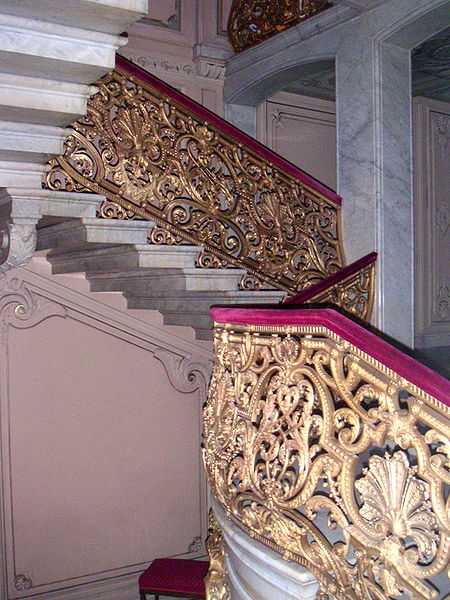
Staircases have transcended their functional role to become significant elements in art and architectural history, reflecting cultural, philosophical, and aesthetic values throughout time.
Staircases in Art and Literature
Staircases have frequently been depicted as powerful symbols in art and literature. They serve not just as architectural elements but also as metaphors for journey, progress, or transition. For example, staircases are often seen in paintings and sculptures where they might represent a path to enlightenment or a descent into the unknown. In literature, a staircase can be a setting for pivotal moments in a narrative, symbolizing change or transformation for the characters involved.
The Double Helix Staircase and the Fibonacci Influence
A pivotal example of artistic and mathematical influence in staircase design is the Double Helix Staircase, famously embodied by the one at Château de Chambord, which is often attributed to Leonardo da Vinci. This staircase’s design may reflect the Fibonacci sequence, a pattern Leonardo Fibonacci introduced to Western mathematics, although it has been part of art and architecture for longer. In this sequence, each number is the sum of the two preceding ones. The double helix takes the form of two intertwining spirals that allow people to ascend and descend without encountering each other, a design that elegantly combines function, form, and the concept of infinity, which is a constant in nature and art.
Modern Staircase Architecture
Modern staircase architecture reflects the fusion of form and function with design innovations that prioritize space efficiency, comfort, and striking aesthetics. It represents a significant shift towards the use of new materials and thoughtful integration within modern buildings.
20th Century Designs
In the 20th century, architects began to experiment with staircase shapes and design concepts that would complement the modernist ethos of simplicity and function. The utilization of steel and reinforced concrete allowed for the creation of cantilevered and spiral staircases that seemed to defy gravity, adding not only function but also sculptural innovation to the buildings they served.
Staircases and Modernism
Modernism in architecture promoted the idea that form should follow function, and staircase designs adhered to this principle by eliminating superfluous decorations and focusing on clean lines and minimalist aesthetics. The book “The Staircase: The Architecture of Ascent” delves into the importance of staircase design in modern architecture, showing how these structures went beyond mere functionality to become central design features.
Contemporary Materials and Methods
Today, contemporary materials like glass, metal, and even advanced polymers have introduced a level of comfort and versatility previously unseen. Modern staircases are often designed to allow for more light and transparency, with floating staircases creating an illusion of space and openness. The innovation in design methods – such as computer-aided manufacturing and digital fabrication techniques – has made possible intricate shapes and forms that accommodate a wide array of architectural contexts.
Functionality and Accessibility
Staircases historically have been integral in the structure and function of buildings, aiding movement between floors. Design evolution has pivoted towards inclusive accessibility and enhancing comfort.
Innovations in Comfort and Access
The role of staircases transcended pure function as architects like Andrea Palladio incorporated the idea of comfort into their designs. Innovations in staircase architecture have since focused on ease of use, integrating features like gentle inclines and ergonomic railings. The advent of the stairlift by companies dedicated to mobility solutions further illustrates the emphasis on making stairs not just accessible but also comfortable for individuals with mobility challenges.
Universal Design Principles
The notion of universal design has redefined staircase accessibility, advocating for spaces that everyone can use, regardless of age, ability, or status. This principle ensures staircases are designed with inclusivity in mind, making features such as wide steps, non-slip surfaces, and ample lighting standard. Application of universal design in modern architecture aims to minimize barriers and promote equal access for all individuals, realizing a stairway that serves its function without discrimination.
Stairs as Symbolic Constructs
Staircases serve not just a functional purpose but often carry deep symbolic meanings, reflecting notions of spiritual elevation and the journey towards enlightenment across various cultures.
Staircases and Spiritual Significance
Staircases are frequently associated with the notion of ascent to a higher state of being. In many religious and spiritual traditions, they represent the pathway towards enlightenment or heaven. For instance, in Christian iconography, the staircase can symbolize the soul’s ascent to God. The climb to knowledge is also a recurring theme, where steps represent the gradual progression in learning and wisdom.
- Nature: Staircases in gardens or leading to temples are designed to harmonize with the natural surroundings, signifying a connection between the earth and the divine.
- Spiritual Elevation: Ascending a staircase in a sacred context often symbolizes spiritual progress or the journey towards a higher state of consciousness.
Staircases in Cultural Context
Staircases embody not only spiritual ascent but also societal constructs, such as symbols of power. Grand staircases in palatial residences, for instance, are designed to impress and indicate the status of the inhabitants.
- Context: The architectural style and placement of a staircase reflect the cultural and historical context of its environment, communicating values and traditions.
- Contact: Staircases facilitate contact, both physically and symbolically, connecting disparate realms or states of being, such as the mundane to the sacred.
- Climb to Knowledge: Educational institutions often feature prominent staircases, echoing the ascent students make in their pursuit of knowledge.
Across cultures, staircases often reflect the inherent desire to reach for the divine or to ascend in status and understanding.
Safety, Regulation, and Future Trends
The development of staircase architecture not only reflects aesthetic and functional improvements but also a growing emphasis on safety, longevity, and adherence to building codes. These considerations will continue to shape the design of staircases into the future.
Staircase Safety and Building Codes
Safety is a paramount concern in staircase design, with building codes evolving to address various risks such as falls and structural failures. These codes specify minimum widths, maximum riser heights, tread depths, and handrail requirements to ensure safe passage. Geological dangers also influence these regulations, especially in areas prone to earthquakes or other natural occurrences where staircases must be built with enhanced stability.
- Widths and Heights: According to international standards, typical stair tread depth should be a minimum of 11 inches (280 mm), while the maximum riser height should not exceed 7 inches (178 mm).
- Handrails: Both sides of staircases must generally have handrails to aid those with mobility issues and to prevent falls.
- Materials: Durability and non-slip elements are mandatory to increase the longevity of the staircase and ensure public safety.
Quality checks and periodic inspections are enforced to maintain adherence to these standards, ensuring staircases remain safe over time and do not become a barrier to movement.
The Future of Staircase Design
The future trends in staircase design aim to blend innovative materials, technology, and flexibility, thereby enhancing safety and functionality further. Architects and engineers are experimenting with materials like advanced polymers, composites, and smart lighting to create durable and less obtrusive designs that could possibly integrate automated features for improved accessibility.
- Smart Technology: LED lighting, motion sensors, and voice-activated systems will likely become commonplace, reinforcing safety and energy efficiency.
- Materials: The continued use of glass, metal, and concrete will allow for more expressive designs that meet both aesthetic desires and strict regulatory measures.
- Adaptive Design: Designs that adjust to the specific needs of users, such as staircases that can convert to ramps, are on the horizon, aiming to lower barriers and enhance inclusivity.
These advancements in staircase architecture reflect an ongoing commitment to improve safety, comply with regulations, and address the evolving needs of societies, all while pushing the boundaries of design innovation.

